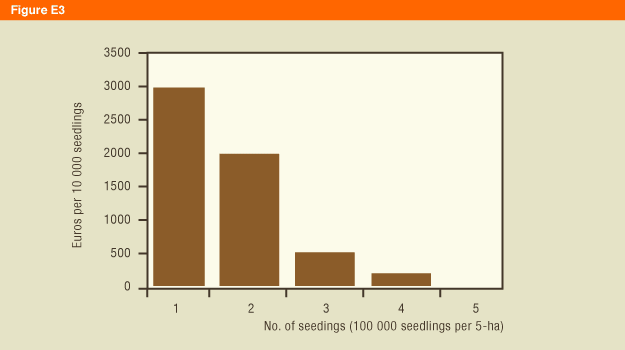Introduction to Forestry Forest Policy and Economics budgeting
Post on: 10 Апрель, 2015 No Comment

2. Capital budgeting
In forestry, capital budgeting is an approach to deciding on how to invest money (capital budget) so its value is maximized. Hence, we compare different investment projects in order to choose the most profitable one by taking into account projects that are outside of the forestry sector. The positive interest rate (the opportunity cost of capital) implies that what we basically want is a mix of projects without maximizing any particular one (i.e. forestry output). By maximizing the total social wellbeing from all activities combined means also that we are not maximizing the physical timber output (i.e. m3 per ha) on commercial timberlands.
For capital budgeting, we need to know (or predict) that for every investment option the timing of all revenues and costs (including the initial investment cost) and the interest rate will be used in discounting. In addition, we need criteria for ranking investments and choosing the best one. We will briefly introduce three of the several available criteria. We will then apply these criteria to reject/accept a simplified forestry investment.
Criteria #1: Net present value
Net present value (NPV) is the present value (PV) of revenues minus the present value (PV) of costs. Importantly, single revenues and costs are each discounted first and after that discounted values are summed to get NPV.
where Rn=revenues in each year n, Cn=costs in each year n, r=discount rate, percent/100, n=an index for years and T=number of years of discounting.
If NPV is zero or greater, a project is acceptable for an investor. The NPV provides the amount that the investor could pay in addition to an initial investment cost in year 0 and still earn a r*100 percent rate of return.
Criteria #2: Benefit/cost ratio
The benefit/cost ratio is useful in allocating a fixed sum of money between different investment alternatives. The B/C ratio for a project is the present value of revenues divided by the present value of costs. If the B/C ratio for an investment project is one or greater, the project is acceptable. When the B/C ratio is 1, the NPV is 0.
Criteria #3: Internal rate of return

The Internal rate of return (IRR) of a project is the discount rate where the present value of revenues minus the present value of costs (i.e. NPV) equals zero.
A project is acceptable if IRR≥r, where r is rate of return from the next best investment opportunity (i.e. the minimum acceptable rate of return).
The three criteria are very closely related. For a single project they provide a similar reject/accept decision. When the discount rate exceeds project’s IRR, and the NPV is negative and B/C<1 then the project is rejected by any of the three criteria. When the IRR exceeds the discount rate, NPV>0 and B/C>1 the project is acceptable by all criteria.
However, by ranking several projects from best to worst, using the criteria introduced, we do not always have the same ordering. The ranking becomes more important when capital is limited. However, this issue is excluded at this stage. It is also possible that for certain projects (with late costs) the NPV may be zero at more than one value of r. In this case, a project may have multiple IRRs and the investment is said to be ambiguous.
The NPV for an illustrative forestry project (like in Table E3) shows that the investor could pay 838 €/ha in addition to 1 000 €/ha- in initial investment costs and still earn a 4 % rate of return. Since r=0.04 is lower than IRR, BC-ratio is greater than one and the NPV is greater than zero, the project can be acceptable by all criteria.
Table E3: Cash flow (€/ha) and the three investment criteria for a forestry (stand establishment) project














